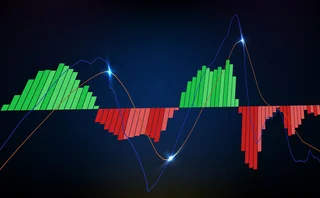
Filling gaps in market data with optimal transport
Julius Baer quant proposes novel way to generate accurate prices for illiquid maturities

Even the most highly traded derivatives can have illiquid points that create gaps in the implied volatility surfaces traders use for pricing. When those illiquid points are surrounded by liquid points, interpolation methods can be used to fill in the gaps. But for deep out-of-the-money strikes and long-dated maturities that are rarely traded, a reliable methodology for extrapolating prices is lacking, with traders often relying on crude approximations that are akin to rules of thumb.
“The most used approaches to fill volatility surface gaps are those that use interpolation techniques based on local volatility models or Bayesian methods,” explains Andrea Pallavicini, head of equity, FX and commodity models at Intesa Sanpaolo. “But those are less suitable for extrapolations of prices at illiquid or non-traded maturities.”
A conversation with traders at Julius Bear in Zurich prompted Valer Zetocha, a senior quantitative analyst at the firm, to search for a better solution.
A natural application I see for this method is the extrapolation of prices for dates that are not typically traded
Riccardo Longoni, Mediobanca
“I get a lot of inputs from traders,” he tells Risk.net. “Recently, I was asked about the stability of the implied volatility surface and how to modify it while it remains non-arbitrageable.”
The traders wanted to ensure the prices they calculate for maturities that are not regularly quoted in the market are still accurate and not arbitrageable. But the crux of the problem is best illustrated with a narrower example.
Say a trader wants to increase the skew of a maturity that is not regularly quoted, either for generating scenarios or to test a sensitivity. One way to do this is by manipulating the implied volatilities. “The problem here is that you are never guaranteed that this will produce a valid distribution and it will be arbitrage-free,” says Zetocha.
In his latest paper, Zetocha explains how to generate a price for a new maturity that is not arbitrageable and also in line with what has been quoted before.
“My method consists of finding two distributions, similar to each other but with one displaying a higher skew,” he explains. “I then derive the map function that transforms the first into the second with higher skew. That function can then be applied to the original distribution, and you’re guaranteed that the resulting one will have a higher skew.”
The technique was inspired by the 18th century French mathematician Gaspard Monge’s solution for moving a pile of sand from one place to another with the least possible effort. Both problems consist of three elements: an initial distribution, a final distribution, and a function that governs the transition between the two. For Monge, the initial and final distributions were known and the optimal function then needed to be discovered. In Zetocha’s case, the initial distribution is also known and the map function is derived as explained above. The final distribution is found using those elements.
The next step is to apply the distribution to the volatility surface. This comes with an additional complexity: the distribution marginals need to be in convex order to avoid time arbitrage. The paper explains how to solve this problem.
The paper is the latest example of optimal transport theory – introduced by Monge – being used in quant finance. Hadrien De March and Pierre Henry-Labordere used similar techniques to build arbitrage-free volatility surfaces, while Julien Guyon has cast the calibration of Vix options models as an optimal transport problem.
Riccardo Longoni, a senior quant in the model validation team at Mediobanca, says Zetocha’s work shows optimal transport techniques also work for extrapolation problems. “A natural application I see for this method is the extrapolation of prices for dates that are not typically traded, for example for products that are typically settled once a month,” he says.
Pallavicini at Intesa Sanpaolo agrees that it is “a useful technique for extrapolation where there is no strike priced at all”, adding that: “In this implementation, [this method] gives you the chance to calculate the closed-form transport function and relies on the assumption that marginal distributions change through time but the way they are connected can be considered invariant.”
Another application cited by Zetocha is changing an existing volatility surface – for instance, to increase the volatility of a process, add more skew or change the term structure.
The connection between the two applications is that they both involve modifying a set of distributions that are in a convex order to generate a new, arbitrage-free surface that has some desired features. The ability to modify the volatility surface could also give rise to other use cases, Zetocha says, such as the generation of new market data or the incorporation of external factors into the surface dynamics.
Only users who have a paid subscription or are part of a corporate subscription are able to print or copy content.
To access these options, along with all other subscription benefits, please contact info@risk.net or view our subscription options here: http://subscriptions.risk.net/subscribe
You are currently unable to print this content. Please contact info@risk.net to find out more.
You are currently unable to copy this content. Please contact info@risk.net to find out more.
Copyright Infopro Digital Limited. All rights reserved.
You may share this content using our article tools. Printing this content is for the sole use of the Authorised User (named subscriber), as outlined in our terms and conditions - https://www.infopro-insight.com/terms-conditions/insight-subscriptions/
If you would like to purchase additional rights please email info@risk.net
Copyright Infopro Digital Limited. All rights reserved.
You may share this content using our article tools. Copying this content is for the sole use of the Authorised User (named subscriber), as outlined in our terms and conditions - https://www.infopro-insight.com/terms-conditions/insight-subscriptions/
If you would like to purchase additional rights please email info@risk.net
More on Views
Georgios Skoufis on RFRs, convexity adjustments and Sabr
Bloomberg quant discusses his new approach for calculating convexity adjustments for RFR swaps
A dynamic margin model takes shape
New paper shows how creditworthiness and concentrations can be reflected into margin requirements
How HSBC got better at pricing share buy-backs
Monte Carlo approach generates faster, more reliable pricing for complex deals
Degree of influence 2023: Quants thrive on volatility
Climate, crypto and market impact also featured among the top research topics in 2023
How to account for banks’ contribution to CO2 emissions
Price adjustments will depend on individual counterparties’ carbon footprints
Exploiting causal biases in market impact models
Model calibration gains efficiency by including biased but adjusted trading data
Skew this: taking the computational burden off basket options
Dan Pirjol presents a snap formula for estimating implied volatility skew in an instant
How a machine learning model closed a hidden FX arbitrage gap
MUFG Securities quant uses variational inference to control the mid volatility of options
Most read
- Revealed: the three EU banks applying for IMA approval
- Top 10 operational risks for 2024
- Industry urges focus on initial margin instead of intraday VM








